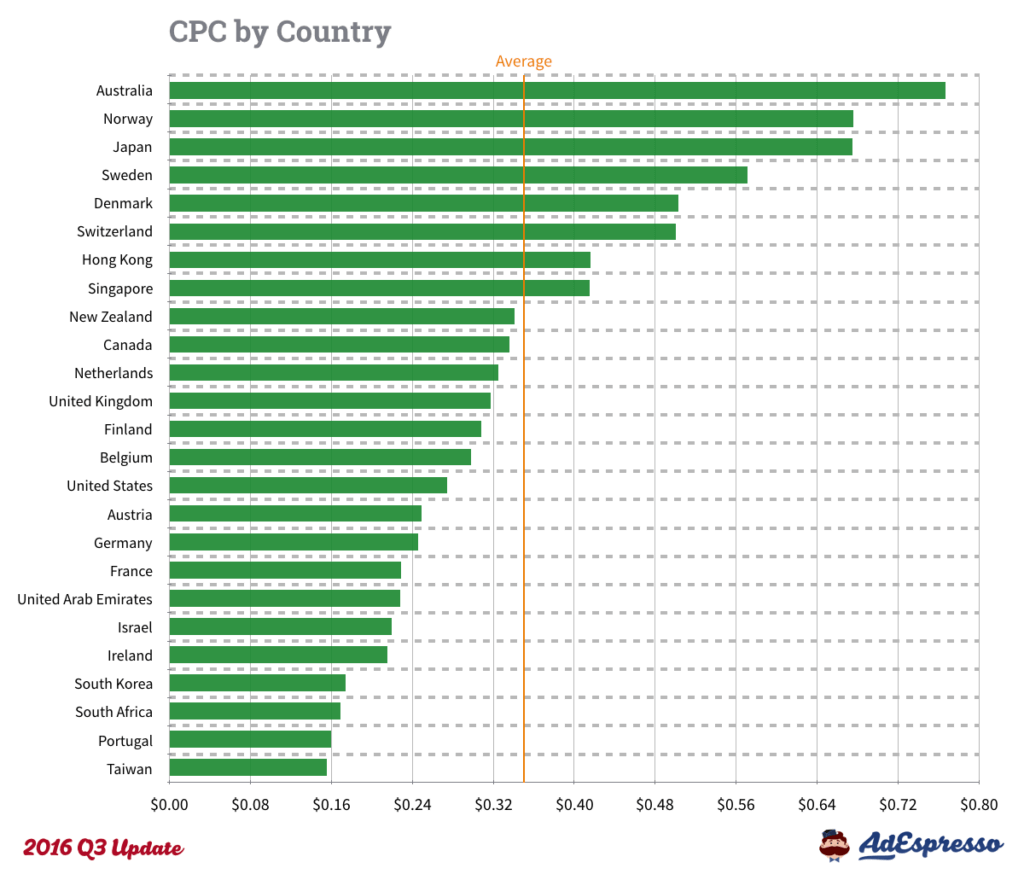
Facebook has become a must in brands’ overall digital marketing strategies — and more and more managers are trying to better understand and evaluate the true costs of a Facebook ad campaign, several factors come into play regarding these costs.
What’s more, even if you spend the same amount, you may notice you’ll get significantly different results depending on the country in which the ad is feature, target audiences, ad goals, and the ad’s design.
AdEspresso, an agency and division of Hootsuite, recently published a major study that helps marketing managers gain insight into the nuances of Facebook ads and determine what really influences their overall costs.

As you can see with the chart above, the average cost per click (CPC) for a “website click” or “website conversion” campaign varies greatly based on the country in which the ad is featured. Although there’s a worldwide average of $0.34, you can expect to pay as little as $0.15 per click in Taiwan or $0.76 per click in Australia!
Why such a huge difference? Here are the five factors that can influence CPC costs:
-
Ad quality and relevance
The first and most important aspect that influences CPC costs is the quality of your Facebook ads — and how they are perceived by users who seem them in their newsfeed or right-hand column.
How does Facebook evaluate the quality and relevance of an ad? Facebook takes into account a variety of criteria regarding your ad (target audience, placement, visuals, text, etc.) and monitors how users react to it, including the time spent looking at the ad, interaction (a Like, share or comment), and how often the follow through on the call to action (clicking on the link or the specific button in the ad).
In this example, an ad campaign that I recently managed generated awesome results. The CPC was extremely low ($0.03 per click). Notice that the relevance score was 10/10, and it received lots of positive feedback. All of these results help to reduce the campaign’s CPC, because Facebook deems that it is relevant. Facebook will even go so far as displaying it more often than other ads that generate lackluster results.




